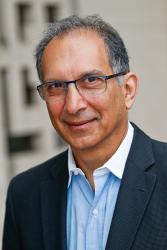Richard Blum died about two weeks ago after a long battle with cancer. His life’s accomplishments are long and varied, and covered in numerous obituaries.
As a trustee of Brookings, Richard had an impact on the institution as a whole (as he did on so many institutions, including his beloved University of California system), but his mark was most deeply felt in the Global Economy and Development research program, which I directed for a number of years—specifically on the topic of global poverty reduction.
For 16 consecutive years, between 2004 and 2019, participants in the Brookings Blum Roundtable on global poverty came together to explore issues ranging from emergent new players in the international donor community to the poverty-insecurity nexus. The roundtable provided an opportunity to discuss—and test out—new ideas for improving approaches to development. The idea for what became the Mo Ibrahim Prize for achievements in African leadership was floated there. Coalitions to design and implement the BUILD Act (resulting in the creation of the U.S. International Development Finance Corporation), and the Global Fragility Act were forged there. President Obama’s Global Development Council, on which Richard would end up serving, had its birth in the roundtable’s ideas to bring business voices, perspectives, and implementation into development cooperation.
One of Richard’s priorities was to hear about development problems from people on the ground. He brought Maria Ressa, who would later win the Nobel Peace Prize, to the Brookings Blum Roundtable in Aspen in 2015 to highlight how digital technologies were disrupting development. He brought Weijan Shan to tell the story of how capitalism can successfully uplift millions of lives even in countries like China. And he brought the stories of how Nepal’s mountain communities could be helped through acts of kindness organized through his American Himalayan Foundation.
These were people he trusted and listened to. In an event at Brookings to discuss his book, “An Accident of Geography,” Richard outlined elements of his approach to philanthropy. He told stories about how he simply stumbled onto things, but the common thread was that he listened to people on the ground and had the compassion and desire to do something to make things better. He listened to the Sherpas who guided him along the mountain treks and summits he loved to climb, who told him about the problems they faced with the trafficking of girls’ in their communities. And he listened with the same intensity to King Birendra of Nepal who encouraged him to restore the 14th century Tibetan monasteries in the district of Mustang to revitalize the local community. Others might consider these interventions to be departures from “traditional” economic development. Richard had no such biases—they were simply the problems that people he respected, regardless of social station, brought to his attention that fell into the category of things he could help with.
His experiences in Nepal gave Richard a healthy dose of skepticism about the ability of government to solve problems of extreme poverty. Indeed, he recounted the King of Nepal telling him “Whenever possible, avoid doing business with my government.” He understood that channeling funds through a government bureaucracy could mean that funds would be diverted and that implementation could suffer. The incentives to get the best outcomes were just not the same in government programs as in the venture capital business world where Richard made his fortune. He was more than happy to get information from government officials, but did not want to rely on them to act.
When Richard acted, he acted at scale if things went well. He may have started by trying to help the children of the Sherpas with whom he trekked, but then quickly asked, “Why just these children, what about all the others in similar circumstances?” He introduced a Blum Center for Developing Economies at the University of California, Berkeley, and when that was massively successful, he expanded to establish similar centers across the UC system. He linked the centers to departments of engineering because of his conviction that innovation and interdisciplinary solutions were key to solving many development projects. He chose to have his centers offer students the option of a minor because he wanted to influence the next generation of business and science leaders, not to create a cadre of professional development “experts.”
Global philanthropy today is a big endeavor. Outside the household names of the Bill & Melinda Gates Foundation, Ford Foundation, and Rockefeller Foundation, there are hundreds of thousands of smaller nonprofits that contribute. The Global Philanthropy Tracker, 2020 identified $68 billion in private cross-border philanthropy from 47 countries across the world, mostly oriented toward education, health, and the fight against poverty. Philanthropists from the United States alone contributed $48 billion to other countries. This compares with a total net official development assistance from the United States of $30 billion.
This breed of American philanthropists shares many of Richard’s values and approaches—development interventions that are locally led, innovative, results-oriented, scaled, technically excellent, and interdisciplinary. Driven by compassion and a willingness to help wherever possible, albeit with a hard-headedness to say no when the right partners could not be found, philanthropists are redefining the global development landscape. Along with my colleague Raj Desai, we dubbed this “the California Consensus.” Its spread is a legacy of Richard Blum, one of the earliest proponents of this global transformation.
Note: Richard Blum contributed to the Global Economy and Development program from 2004 through 2020. The views expressed in this blog are solely those of the author.






Commentary
An accident of geography: Richard Blum and the new breed of development philanthropists
March 15, 2022